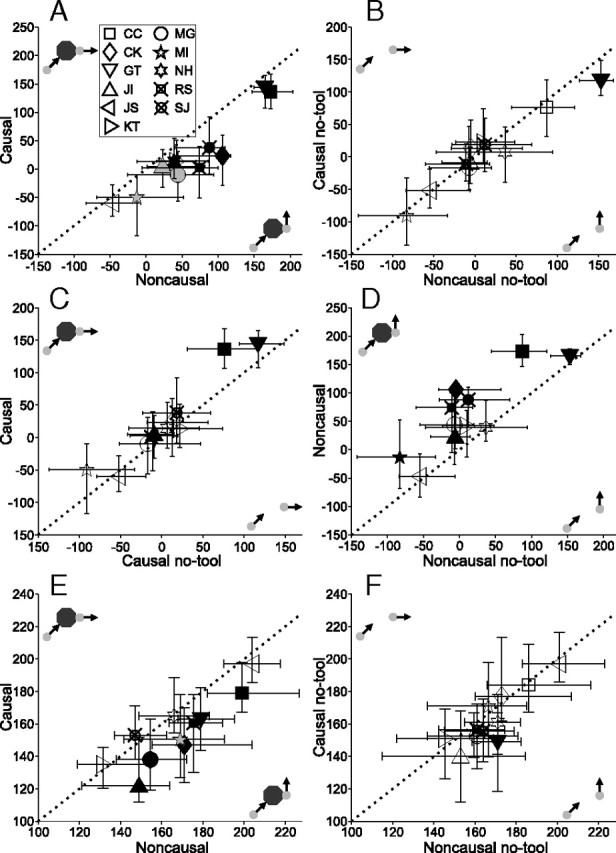Figure 7.

Difference in median movement latencies for all subjects for experiment 2. Filled symbols indicate significance (black, p < 0.0045; gray, p < 0.01); other details as in Figure 6. Note that axes are not identical. A, Causal versus noncausal. All subjects had shorter-latency movements in the causal direction, shown by the points below the unity line. B, No-tool causal versus no-tool noncausal. Like the first experiment, without the causal context there was no consistent difference between response times in the causal and noncausal directions. C, Standard causal versus no-tool causal. Unlike the first experiment, causal context had little effect on movement latencies in the causal direction. D, Standard noncausal versus no-tool noncausal. Also similar to what was observed in the first experiment, movements in the noncausal direction had a longer latency in the causal context, with the tool present. E, Causal versus noncausal, restricted to postpredictive saccades. The latency bias for movements in the causal direction was still present. F, No-tool causal versus no-tool noncausal for postpredictive saccades. As for earlier movements (B), the causal bias largely disappeared in the no-tool condition.
